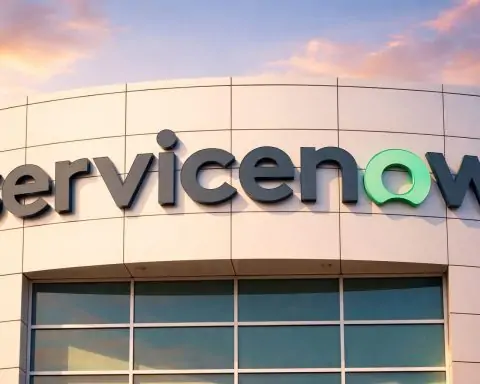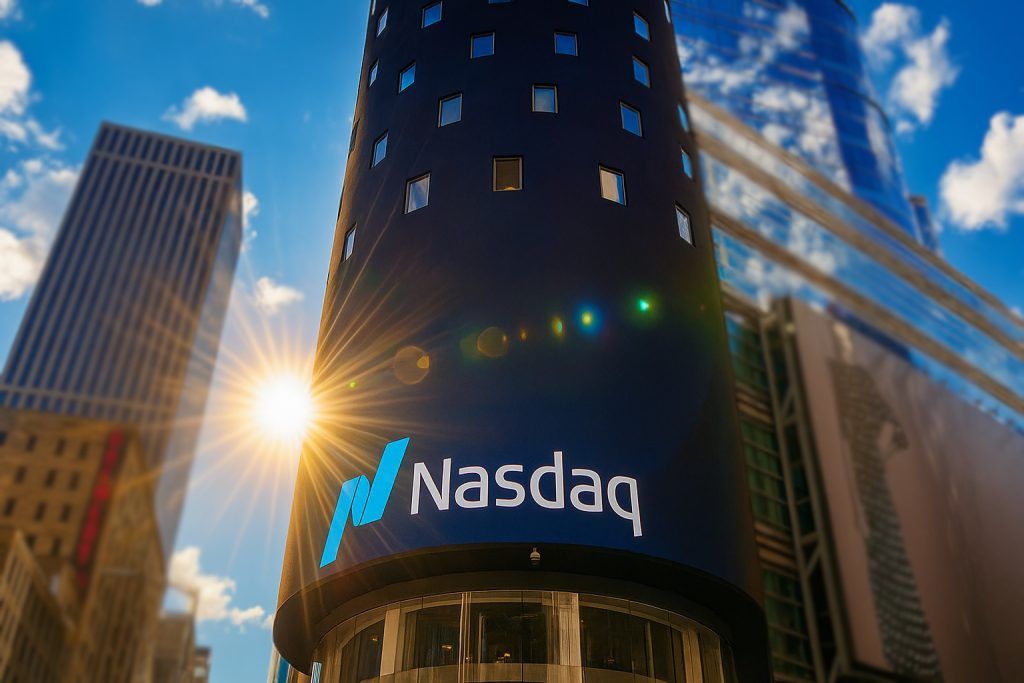- Massive AWS Outage: In late October 2025, Amazon Web Services (AWS) suffered a 16-hour outage that knocked over 2,500 companies and services offline worldwide, disrupting banking, gaming, e-commerce and more [1]. The failure even impacted Amazon’s own services (like Ring cameras and Alexa) and took down major apps such as Fortnite, Snapchat, Reddit, Coinbase, and Venmo [2] [3].
- Root Cause – DNS Automation Bug: Amazon identified a DNS resolution bug in its US-East-1 (N. Virginia) region as the trigger [4]. A latent race condition in an automated DNS management system for DynamoDB caused the system to “delete” a critical address, so services couldn’t find the database [5] [6]. This small glitch cascaded into a global meltdown of AWS’s network, overwhelming other systems and causing widespread errors.
- “AI” Failure & Slow Recovery: AWS’s own automation (an “AI-driven” internal tool) essentially took down part of its network [7]. Engineers fixed the DNS bug within hours, but cascading failures left core services overloaded, requiring manual intervention and throttling of traffic to fully restore operations [8]. The prolonged downtime – roughly 16 hours – underscores that automation alone couldn’t quickly resolve the issue [9]. One tech journalist quipped that “Amazon proved AI can’t replace workers” in managing such crises [10].
- Billion-Dollar Impact: The outage is estimated to have cost around $2.5 billion in lost productivity globally [11]. It was a vivid reminder of how dependent daily life is on cloud infrastructure – “When AWS sneezes, half the internet catches the flu,” said Monica Eaton, CEO of Chargebacks911 [12]. Everything from online banking portals and e-commerce checkouts to IoT gadgets (even smart beds and robot litter boxes) ground to a halt during the incident.
- Cloud Domino Effect: Just days later on Oct. 29, Microsoft’s Azure cloud suffered a major outage due to an inadvertent configuration change in its Front Door network service, causing DNS routing failures [13]. This unrelated Microsoft outage simultaneously disrupted apps that use both Azure and AWS, leading to false reports that AWS was “down” again [14] [15]. AWS clarified its services were actually operating normally and that an external provider’s issue was affecting some customers’ applications [16]. The incident highlighted the interdependence of cloud platforms – an Azure failure made people think AWS and even Google Cloud had problems, illustrating how one cloud’s hiccup can ripple across the internet.
- Experts Demand Resilience: Industry experts say these outages expose the internet’s fragile backbone and are calling for major changes. They note that AWS’s single-region dependency (us-east-1) is an obvious single point of failure, and they urge businesses to adopt multi-region architectures and even multi-cloud backups [17] [18]. “This is a harsh wake-up call about the need for multi-regional redundancy and intelligent architecture,” said Ismael Wrixen, CEO of ThriveCart [19]. Analysts argue cloud giants must re-architect their systems for modern scale, as simply patching legacy infrastructure is “no longer viable” long-term [20].
- Stocks Unshaken: Despite the turmoil, investors remain confident in the cloud titans. Amazon’s stock (NASDAQ: AMZN) hit an all-time high around $254 per share in early November 2025 [21], shortly after the outage, buoyed by strong earnings and cloud growth. Microsoft’s stock (NASDAQ: MSFT) also remained robust around $517 (after touching record highs ~$542 pre-outage) [22]. The market reaction suggests these one-off outages haven’t dented Wall Street’s faith in Big Tech’s cloud businesses – at least not yet.
AWS Outage “Breaks the Internet” in October 2025
Late last month, Amazon Web Services – the world’s largest cloud provider – experienced a catastrophic outage that many dubbed an “internet blackout.” The trouble began on October 19, 2025 (Monday), inside AWS’s busiest data center hub in Northern Virginia (US-East-1). According to Amazon, a “DNS resolution issue” in that region set off a chain reaction of failures [23]. In simpler terms, part of the internet’s “phone book” stopped working properly. Specifically, AWS’s internal Domain Name System (DNS) – which translates service names to network locations – suddenly couldn’t find the address for Amazon’s DynamoDB database service [24] [25]. DynamoDB is a core component used by countless applications, so this was like the phone book losing the number to a major switchboard.
That tiny glitch led to huge consequences. With the DNS misrouting DynamoDB requests, critical services started timing out and crashing [26]. The initial failure quickly cascaded across AWS’s cloud. It’s akin to a power grid: when one major substation goes offline, the remaining ones get overloaded. In AWS’s case, losing DynamoDB’s address caused a surge of retry traffic and errors that overwhelmed other systems. AWS’s Elastic Compute (EC2) servers and networking in us-east-1 were strained by a massive backlog of updates, and even after DynamoDB was fixed, it took hours for these backlogs to clear [27] [28]. Amazon eventually resorted to rate-limiting (slowing down) new requests to stabilize the “grid” while engineers manually untangled the mess [29].
All told, it took about 16 hours for AWS to fully restore normal operations [30]. During that time, huge portions of the internet were unreachable. Major websites and apps went dark – from financial services (e.g. Coinbase, Venmo and several banks) to entertainment platforms (Fortnite, PlayStation Network, Snapchat, Reddit) and productivity tools [31] [32]. Even Amazon’s own retail website and smart home products were hit: status pages showed issues with Ring security cameras and Alexa voice assistants [33] [34]. On social media, users joked that Amazon “broke the internet” – and indeed the outage’s impact was so widespread that even everyday tasks like paying bills, attending online classes, or unlocking a smart doorbell failed for many people.
The sheer scale of this outage drove home how much of the digital world relies on AWS’s cloud. “When AWS sneezes, half the internet catches the flu,” quipped Monica Eaton, a tech CEO, summarizing the situation [35]. AWS is estimated to host about 30% of all cloud-based services globally [36], and this incident proved the ripple effects are enormous when its flagship region falters. By one analysis, the downtime impacted over 2,500 companies and services and likely cost around $2.5 billion in lost productivity and revenue [37]. For context, that’s roughly the economic output of a large city gone in 16 hours. And beyond the dollars, there were tangible disruptions to daily life – from smart home gadgets malfunctioning to flights delayed (airlines’ IT systems were affected) – all traced back to a cloud data center issue.
What Went Wrong: A Single Point of Failure and an “AI” Oversight
AWS’s official post-mortem revealed the root trigger to be a latent software bug – essentially a race condition – in its DNS management system for DynamoDB [38]. This internal system is meant to monitor and refresh DNS entries to keep services running smoothly. Unfortunately, on that fateful day it encountered a rare timing error that led it to misconfigure or withdraw a key DNS entry for DynamoDB in us-east-1 [39] [40]. In effect, AWS’s own automation “spontaneously deleted the address for [its] main database warehouse”, as one analysis described it [41]. With DynamoDB’s address vanished from DNS, any service trying to reach that database couldn’t get through – similar to dialing a phone number that isn’t in service.
This seemingly small internal glitch spiraled into a major outage due to how tightly interconnected AWS’s services are. The failure caused systems reliant on DynamoDB in us-east-1 to error out, affecting both customer-facing traffic and AWS’s own internal services [42]. As errors piled up, other AWS components (EC2 servers, networking gear, load balancers) buckled under the unexpected load [43] [44]. AWS engineers did fix the DNS bug – Amazon says the underlying DNS issue was mitigated by 2:24 AM PDT on Oct. 20 [45] [46] – but by then the “cascading failure” was in full swing. Even after the DNS was repaired, critical subsystems were backlogged and out-of-sync, requiring careful manual recovery steps and throttling of new tasks [47]. That is why it took until that evening (Oct. 20) for Amazon to finally declare all AWS services back to normal [48] [49].
Notably, Amazon’s report confirms that an automated tool triggered this meltdown. “Amazon is admitting that one of its automation tools took down part of its own network,” observed Chris Ciabarra, CTO of Athena Security, after reading the post-mortem [50]. In other words, AWS’s highly automated cloud operations – often touted as powered by advanced AI and algorithms – backfired on itself. This isn’t the first time, either. A similar situation occurred in December 2021, when an automated scaling script in AWS’s internal network caused a flood of traffic that overwhelmed network devices, leading to a multi-hour outage [51] [52]. You’d think Amazon would have learned its lesson about giving AI/automation free rein over critical infrastructure, but here we are again. As tech writer Will Lockett dryly noted, Amazon just proved (again) that AI can’t fully replace human engineers in running the cloud [53].
Why did it take so long to fix this time? Part of the reason is that AWS’s own monitoring and fail-safes struggled once the outage began. In past incidents, Amazon admitted that internal network congestion prevented ops teams from even seeing what was wrong via their dashboards [54] [55]. In this case, the cascading nature of the failure meant simply restoring the DNS entry wasn’t enough – engineers had to manually unwind the chaos (restarting services, draining queues, synchronizing data) across one of the world’s most complex distributed systems. And much of this happened in the middle of the night outside of U.S. business hours, which one expert noted was problematic: “The real story isn’t just that AWS had a critical issue, but how many businesses discovered their platform partner had no plan for it, especially outside of US hours,” said Ismael Wrixen of ThriveCart [56]. In other words, the outage dragged on while global teams slept and automatic systems floundered.
Crucially, AWS’s design itself came under scrutiny. The fact that a single region’s DNS hiccup could cripple services worldwide struck many as a dangerous architectural flaw. AWS encourages customers to deploy in multiple regions for resiliency, yet some core AWS services had hidden single-region dependencies. “It’s impressive it works as well as it does, but that’s the problem – the foundation was built decades ago and wasn’t meant for today’s scale,” wrote analyst Evan Schuman, pointing out that AWS (and other hyperscalers) have been iteratively building on old architecture [57]. Another cloud engineer, Catalin Voicu, agreed that “the underlying architecture and network dependencies still remain the same…unless there is an entire re-architect of AWS” [58]. In AWS’s detailed technical summary, they listed all the systems that failed, but never pinpointed what was different on Oct. 19 that allowed the latent bug to surface [59]. That omission leaves a worrying question mark: if we don’t know the exact trigger (a specific script change? a traffic threshold hit?), can we be sure it won’t happen again soon?
Cloud Chaos Part 2: Microsoft’s Outage and False Alarm for AWS
As if one cloud collapse wasn’t enough, the very next week saw a major Microsoft cloud outage that only added to the turmoil. On October 29, 2025, many Microsoft online services suddenly went down – not just Azure cloud servers, but also Microsoft 365 apps, Teams, Xbox Live, and more [60] [61]. Users around the world experienced Office 365 errors, and gamers found Xbox services unresponsive. According to Microsoft’s status updates, the cause was an “inadvertent configuration change” to Azure Front Door (a global traffic routing service), which led to widespread DNS resolution failures in Microsoft’s network [62]. Essentially, Microsoft flipped the wrong switch in a central routing system, and large portions of the web relying on Azure couldn’t connect.
During the Microsoft outage, something interesting happened: reports of problems on AWS spiked as well, even though AWS wasn’t actually down. Outage-monitoring sites like DownDetector lit up with user reports about AWS issues [63] [64]. Social media swirled with confusion, with many assuming AWS was having a second meltdown. What was really going on? The answer lies in the interdependence of modern web services. Many large companies run a multi-cloud setup, using both AWS and Azure (and sometimes Google Cloud) for different components of their applications [65]. So when Azure’s network went haywire, all those apps that straddle clouds started malfunctioning – and users experienced outages even in parts of the app that rely on AWS. To an end user or IT admin, it looked like AWS was failing too, when in reality AWS’s infrastructure was fine; it was Azure’s failure breaking the apps.
AWS quickly disputed the reports and clarified that its own services were operating normally [66]. On its health dashboard, AWS noted an issue “at another infrastructure provider” was impacting some customers’ applications (without naming Microsoft) [67]. In effect, AWS was saying: we’re okay, the problem’s on Azure’s side. And indeed, once Microsoft rolled back its faulty config by that afternoon (they deployed a “last known good” configuration to fix Azure by about 1:30 pm Pacific) [68], the cross-cloud issues subsided. But the incident demonstrated a “perceived domino effect” in outage reporting [69]. Jason England at Tom’s Guide noted that whenever one big cloud goes down, false-positive reports often surge for others – a kind of panic feedback loop [70]. In this case, even Google Cloud saw a bump in outage reports purely because Azure was down [71], showing how people assume any connectivity issue might be a broader internet problem.
For Microsoft, the outage lasted around five hours and was resolved by that evening, with the root cause pinned on a simple config mistake [72] [73]. Microsoft, like Amazon, apologized and will presumably add safeguards. But coming so soon after AWS’s fiasco, the Azure incident underscored a larger point: the cloud ecosystem is highly concentrated and interconnected. Two unrelated failures at two companies, within days of each other, managed to rock a huge chunk of online services. It was an uneasy reminder that just a handful of tech giants (Amazon, Microsoft, Google) power most of the internet’s critical infrastructure – and when they stumble, everyone feels it.
The Fallout: Broken Trust and Real-World Consequences
Beyond the technical fixes, these outages had immediate real-world consequences and raised hard questions for businesses and IT leaders. During AWS’s 16-hour downtime, companies large and small were essentially at a standstill if they depended on AWS. E-commerce sites couldn’t process orders, payment systems failed, and internal enterprise apps went offline. Educational institutions using cloud-based platforms had to cancel online classes and exams. Government services and healthcare apps faced interruptions. In the UK, several major banks’ online banking systems went down simultaneously [74], while in the US, people reported issues using payment apps like Paypal and Venmo [75] [76]. Communications tools were hit too – Slack and Zoom issues were noted, and even texting via services like Signal was affected [77].
It wasn’t just “tech” companies that felt the pain; even physical devices and services failed. Smart home owners found that Ring doorbells and security cameras stopped working [78] [79], and Alexa smart speakers went silent – a disconcerting experience for those reliant on voice assistants. Users of Life360, a family GPS tracking app, lost service [80]. And anecdotally, some Eight Sleep smart mattress owners said their beds’ temperature control went offline due to the cloud outage [81]. These examples might seem trivial, but they highlight how deeply cloud tentacles extend into daily life – from your front door to your bedroom.
The double whammy of AWS and Azure outages in one week also eroded confidence among some cloud customers. Companies spend millions on cloud infrastructure expecting near-constant availability. When that promise is broken so spectacularly, it prompts difficult discussions: Do we have a backup plan? How do we communicate downtime to customers? Can we sue for SLA breaches? (AWS offers service credits for downtime, but money can’t always repair the reputational damage of being offline.) The October incidents provoked renewed interest in disaster recovery and redundancy strategies. Businesses that were badly hit are surely reevaluating their architectures, asking how they can avoid being caught in the next cloud quake. As one CEO put it, “This is a harsh wake-up call about the critical need for multi-regional redundancy…” [82] – meaning companies can’t just trust one data center (or even one provider) and hope for the best.
Another outcome is a growing sense that cloud giants might need external oversight if their services are now effectively critical infrastructure. Think about it: banks, hospitals, transportation systems, and governments all run on these clouds. “Within hours, thousands of applications across finance, healthcare and government sectors experienced major interruptions – a textbook example of a cyber cascading failure,” observed Professor Ariel Pinto, a cybersecurity scholar [83]. He and others suggest that as cloud services become central to society, we need better risk modeling and possibly regulation to ensure resilience [84] [85]. There is precedent for treating certain industries as “too critical to fail” (e.g. utilities, telecom). Now cloud computing may be approaching that territory. Regulators could mandate, for example, that critical services (banks, hospitals, etc.) must have a multi-cloud failover plan or use multiple regions, to reduce systemic risk [86]. These are the kinds of discussions now happening in the aftermath.
Can We Prevent the Next Outage? – Experts Weigh In
In the wake of these incidents, the tech community is abuzz with ideas on how to prevent a repeat – or at least mitigate the damage. One clear consensus: avoiding single points of failure is key. It sounds obvious, but as the AWS outage showed, even a company as sophisticated as Amazon had an Achilles’ heel in one region. “The way forward is not zero failure but contained failure,” wrote researchers at Ookla (the internet analytics firm) in their analysis, meaning outages will happen but they shouldn’t be allowed to cascade widely [87]. To achieve contained failures, architectural changes are needed at both the cloud provider level and the customer level.
Cloud providers like Amazon will need to rethink some fundamental designs. The traditional approach of building on legacy systems and patching as you go is straining under global scale. There are calls for AWS to re-architect its core systems – especially global services like DNS – to be truly multi-region and isolated. Brent Ellis, a principal analyst at Forrester, noted that hyperscalers often have “services that are single points of failure that are not well-documented”, and that no amount of typical “well-architected” best practices would have fully shielded AWS from this kind of problem [88] [89]. In AWS’s case, experts want to see hard evidence that one region going down won’t drag down others in the future. “If AWS wants to win back enterprise confidence, it needs to show hard evidence that one regional incident can’t cascade across its global network again,” said Athena Security’s Ciabarra [90]. So far, Amazon’s response has been to promise improved safeguards and procedures, but critics call those “band-aids” rather than a true cure [91] [92].
On the customer side, companies are being urged to embrace redundancy – even if it costs more. The old adage “don’t put all your eggs in one basket” applies here. “Every business that relies on cloud infrastructure should have a clear strategy for resiliency,” advises Debanjan Saha, CEO of DataRobot and former AWS general manager [93]. “That means thinking beyond a single data center or region, and ideally beyond a single provider – building for multi-region, and where possible, multi-cloud or hybrid environments. This inevitably adds cost and complexity, but for any organization where uptime is mission-critical, that investment is well worth it.” [94] In practice, this could mean running one’s applications active-active across two AWS regions, or having a secondary system on Azure or Google Cloud as a backup. Some companies that can’t tolerate downtime have already adopted this approach (for instance, using multiple cloud vendors for critical services), but many have not – often due to budget or the complexity of managing it. After October’s events, however, the interest in multi-cloud strategies is skyrocketing.
There are also discussions about better communication and monitoring. Tom’s Guide, which initially misreported AWS was down during the Azure outage, has changed its reporting process to rely on official status pages and confirmed evidence before declaring an outage [95]. This is a reminder that in the fog of an outage, misinformation can spread quickly. Companies are advised to have clear incident response plans not just for restoring systems but for informing users and media to avoid panic. AWS’s own status dashboard infamously lagged during the 2025 outage (and in past incidents) – Amazon has said it’s working on a more robust status system [96], which would help customers get timely updates when things go wrong.
Finally, some experts point out that while automation and AI will continue to play a big role in cloud operations (for efficiency and scale), there must be better safeguards on automated systems. Perhaps more human oversight, more rigorous testing of automated changes, or “circuit breakers” that halt cascading processes automatically. The irony of an AI-like system causing the AWS outage isn’t lost on anyone. Moving forward, cloud providers will likely double-check their change management processes – e.g., require multiple internal approvals for global config changes or have automated rollback mechanisms ready to deploy in seconds. The goal would be to catch an unusual event before it snowballs.
Market Reaction and Forecast
One striking aspect of this saga is how quickly the tech industry moved on – at least on the surface. Despite the outages, the major cloud providers have not lost customers en masse nor seen their businesses falter in the immediate aftermath. In fact, Amazon’s stock price reached an all-time high in early November 2025 [97]. Part of this is timing: Amazon had just reported strong quarterly earnings around the same time, and AWS’s revenue growth remains solid. The market seems to view the outage as a temporary hiccup rather than a long-term risk to Amazon’s dominance. Similarly, Microsoft’s stock remains near historic highs [98], with investors confident that Azure’s growth in the AI and enterprise space will continue.
However, just because the stock market shrugged it off does not mean there are no long-term implications. Enterprise customers will remember the day the cloud let them down. We may see some diversification as a result – for example, a big bank might insist on using two cloud providers instead of one for critical systems, or a software company might redesign its app to work across multiple AWS regions by default. These changes could modestly increase costs for cloud vendors (as clients demand more backup capabilities or penalty clauses for downtime) and perhaps slow the stampede of cloud migration if organizations become more cautious.
On the flip side, the outages might also spur innovation in cloud reliability. Amazon, Microsoft, and Google will be investing heavily to assure clients (and regulators) that they can handle failures better. We might hear announcements of new redundancy features at upcoming cloud conferences. AWS re:Invent (Amazon’s big cloud event) is scheduled for late November 2025; it wouldn’t be surprising if AWS addresses the outage and outlines improvements. Look for buzzwords like “fault isolation,” “self-healing networks,” and maybe even AI-driven predictive maintenance (ironically, using AI to prevent the kind of AI/automation failure that happened).
Industry analysts predict that cloud adoption will still grow in 2026 and beyond – the advantages of cloud are too great for most companies to ignore – but there will be more scrutiny on uptime guarantees and architectural soundness. The recent incidents could accelerate a trend toward “sovereign cloud” or decentralized cloud setups for critical infrastructure, where essential services have dedicated or independent backups (whether government-run clouds or cross-cloud cooperatives) to ensure national resilience. Regulators in the EU and US are already asking questions; we may see new guidelines or standards for cloud reliability emerging.
In the end, the Internet’s backbone has been given a stress test, and it revealed some cracks. Both Amazon and Microsoft have strong incentives to fix those cracks swiftly – their reputations and future business depend on it. Customers, on their part, have gotten a wake-up call to plan for the unthinkable. As one expert succinctly put it, “Every business that uses the cloud must plan for failure – it’s not if but when”. The hope is that next time, if a major cloud node falters, the failure can be contained to a smaller blast radius and resolved faster, avoiding a global “internet flu.”
Conclusion
The late-2025 cloud outages showed that even the tech titans are not infallible. A single software bug in an Amazon data center can snowball into a $2.5 billion catastrophe that the whole world feels. A config error in Microsoft’s network can trick people into thinking the entire internet is collapsing. These events have jolted the industry into confronting an uncomfortable truth: our digital lives rely on extremely complex, interwoven systems that can fail in unpredictable ways. The answer is not to abandon the cloud – that genie is out of the bottle – but to build more robustly and plan for contingencies.
Amazon’s AWS, in particular, faces the challenge of assuring customers that this was a one-off disaster and not a preview of more to come. The company has weathered backlash from past outages and continued to thrive, but each incident adds pressure. As AWS’s own post-mortem acknowledgements show, trust is earned in transparency and improvement: clients will be watching to see if AWS truly fortifies its architecture or just issues mea culpas and moves on. If Amazon and its peers take the lessons to heart – implementing multi-region fail-safes, auditing their automation, collaborating with regulators on standards – the internet will emerge stronger. If not, we may be due for another “internet-breaking” day sooner than we think.
For now, cloud users large and small should take heed. Have a backup plan, test your failovers, diversify your infrastructure if you can. The cloud makes computing easier 99% of the time, but as October 2025 showed, that 1% can be a real nightmare. In an always-online world, a few hours of outage can feel like an eternity. Hopefully, with reforms and resilience, the next outage – because there will be a next one – will be shorter and less severe. Until then, we’ll keep our fingers crossed that the cloud giants keep the sky from falling. As the saying goes, when one cloud catches cold, let’s make sure the whole internet doesn’t get sick.
Sources:
- Zack Whittaker & Sarah Perez, TechCrunch – “Amazon identifies the issue that broke much of the internet, says AWS is back to normal” (Oct 21, 2025) [99] [100]
- Jason England, Tom’s Guide – “How many more AWS outages until the internet builds a real backup plan? (The $2.5B question)” (Oct 21, 2025) [101] [102]
- Jason England, Tom’s Guide – “AWS was not down, and it was wrongly connected to the Microsoft outage” (Oct 30, 2025) [103] [104]
- Evan Schuman, Computerworld – “The AWS outage post-mortem is more revealing in what it doesn’t say” (Nov 3, 2025) [105] [106]
- Will Lockett, Medium – “Amazon Just Proved AI Isn’t The Answer Yet Again” (Nov 2025) [107] [108]
- Reddit discussion of Ars Technica report – summary of AWS post-event analysis (Oct 2025) [109] [110]
- Emma Roth, The Verge – “Amazon Web Services says overwhelmed network devices triggered outage” (Dec 11, 2021) [111] [112]
- Stock price data from Macrotrends (accessed Nov 4, 2025) [113] [114]
- Microsoft Azure status report via Tom’s Guide live blog (Oct 29, 2025) [115] [116]
- Expert commentary: Monica Eaton (Chargebacks911) [117], Ismael Wrixen (ThriveCart) [118], Debanjan Saha (DataRobot) [119], Chris Ciabarra (Athena Security) [120], Catalin Voicu (N2W Software) [121], Ariel Pinto (University at Albany) [122].
References
1. www.tomsguide.com, 2. techcrunch.com, 3. www.tomsguide.com, 4. techcrunch.com, 5. www.reddit.com, 6. www.tomsguide.com, 7. www.computerworld.com, 8. www.tomsguide.com, 9. wlockett.medium.com, 10. wlockett.medium.com, 11. www.tomsguide.com, 12. www.tomsguide.com, 13. www.tomsguide.com, 14. www.tomsguide.com, 15. www.tomsguide.com, 16. www.tomsguide.com, 17. www.reddit.com, 18. www.tomsguide.com, 19. www.tomsguide.com, 20. www.computerworld.com, 21. www.macrotrends.net, 22. www.macrotrends.net, 23. techcrunch.com, 24. www.tomsguide.com, 25. www.tomsguide.com, 26. www.tomsguide.com, 27. www.reddit.com, 28. www.reddit.com, 29. www.tomsguide.com, 30. wlockett.medium.com, 31. techcrunch.com, 32. www.tomsguide.com, 33. techcrunch.com, 34. www.tomsguide.com, 35. www.tomsguide.com, 36. techcrunch.com, 37. www.tomsguide.com, 38. www.reddit.com, 39. www.reddit.com, 40. www.reddit.com, 41. www.tomsguide.com, 42. www.reddit.com, 43. www.reddit.com, 44. www.reddit.com, 45. techcrunch.com, 46. techcrunch.com, 47. www.tomsguide.com, 48. techcrunch.com, 49. techcrunch.com, 50. www.computerworld.com, 51. www.theverge.com, 52. www.theverge.com, 53. wlockett.medium.com, 54. www.theverge.com, 55. www.theverge.com, 56. www.tomsguide.com, 57. www.computerworld.com, 58. www.computerworld.com, 59. www.computerworld.com, 60. www.tomsguide.com, 61. www.tomsguide.com, 62. www.tomsguide.com, 63. www.tomsguide.com, 64. www.tomsguide.com, 65. www.tomsguide.com, 66. www.tomsguide.com, 67. www.tomsguide.com, 68. www.tomsguide.com, 69. www.tomsguide.com, 70. www.tomsguide.com, 71. www.tomsguide.com, 72. www.tomsguide.com, 73. www.tomsguide.com, 74. www.tomsguide.com, 75. www.tomsguide.com, 76. www.tomsguide.com, 77. techcrunch.com, 78. techcrunch.com, 79. www.tomsguide.com, 80. www.tomsguide.com, 81. techcrunch.com, 82. www.tomsguide.com, 83. www.tomsguide.com, 84. www.tomsguide.com, 85. www.tomsguide.com, 86. www.tomsguide.com, 87. www.reddit.com, 88. www.computerworld.com, 89. www.computerworld.com, 90. www.computerworld.com, 91. www.computerworld.com, 92. www.computerworld.com, 93. www.tomsguide.com, 94. www.tomsguide.com, 95. www.tomsguide.com, 96. www.theverge.com, 97. www.macrotrends.net, 98. www.macrotrends.net, 99. techcrunch.com, 100. techcrunch.com, 101. www.tomsguide.com, 102. www.tomsguide.com, 103. www.tomsguide.com, 104. www.tomsguide.com, 105. www.computerworld.com, 106. www.computerworld.com, 107. wlockett.medium.com, 108. wlockett.medium.com, 109. www.reddit.com, 110. www.reddit.com, 111. www.theverge.com, 112. www.theverge.com, 113. www.macrotrends.net, 114. www.macrotrends.net, 115. www.tomsguide.com, 116. www.tomsguide.com, 117. www.tomsguide.com, 118. www.tomsguide.com, 119. www.tomsguide.com, 120. www.computerworld.com, 121. www.computerworld.com, 122. www.tomsguide.com










